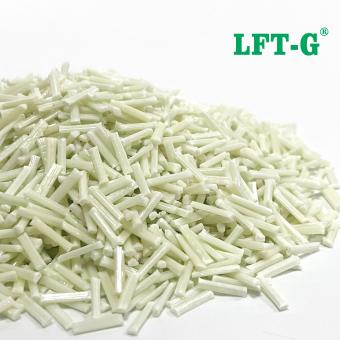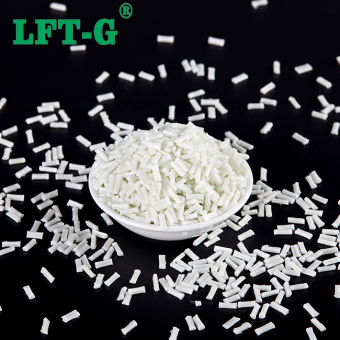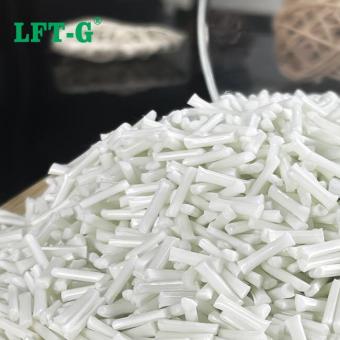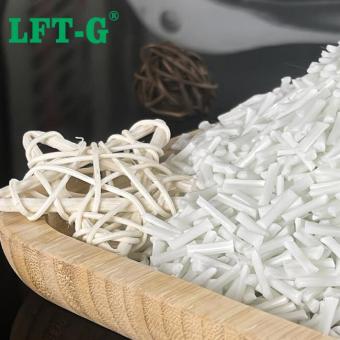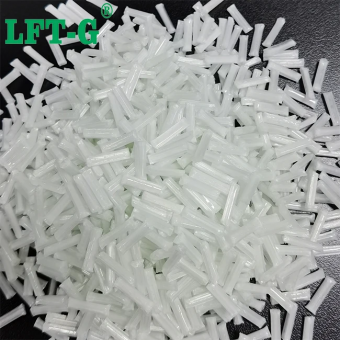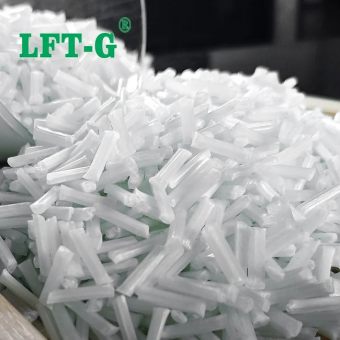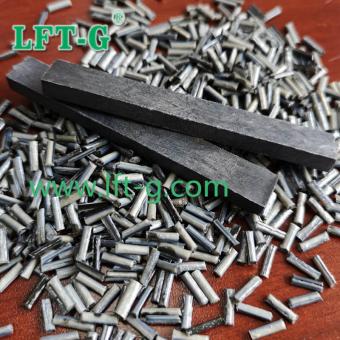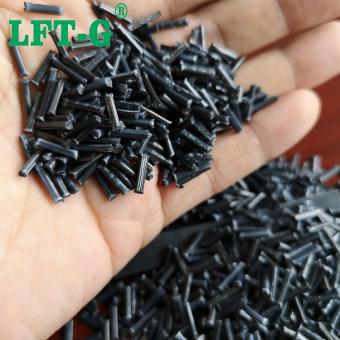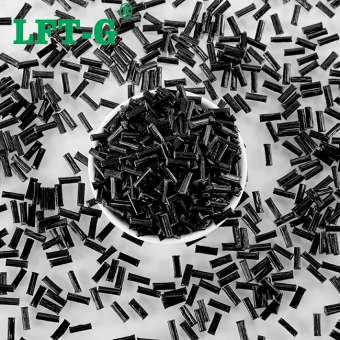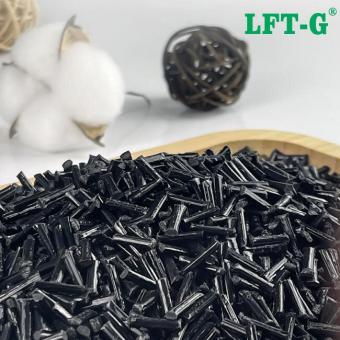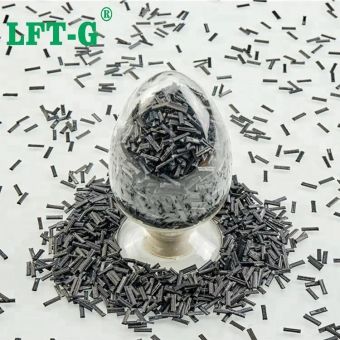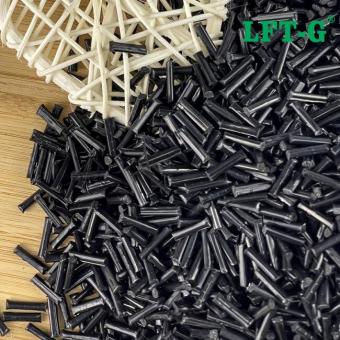-
LFT PPA Long Fiber Reinforced Polymer for Durable ApplicationsPPA long glass fiber composites are high-performance thermoplastic materials that combine the durability and strength of glass fiber reinforcement with the superior properties of PPA engineering plastics, making them ideal for demanding industrial applications.
- Long glass fiber composite
- PPA polymer
- PPA plastic
- engineering plastic materials
- thermoplastic composites
- industrial PPA reinforced polymer
Tags :
-
High rigidity and toughness Polyamide 12 filling long fiber compoundsPA12 PA12 polyamide or nylon 12 Chemical and physical properties of PA12 PA12 is a linear, semi-crystalline - crystalline thermoplastic material from butadiene. Its properties are similar to PA11, but its crystal structure is different. PA12 is a good electrical insulator and will not be affected by moisture as other polyamides. PA12 has good impact resistance mechanical and chemical stability. There are many improved varieties of PA12 in terms of plasticizing and reinforcing properties. Compared with PA6 and PA66, these materials have lower melting point and density, and have very high moisture recovery. PA12 has no resistance to strong oxidizing acids. The viscosity of PA12 depends mainly on humidity, temperature and storage time. PA12 It's very liquid. The shrinkage rate of PA12 is between 0.5% and 2%, depending on the variety of PA12 material, wall thickness and other process conditions. PA12 compounds plastic Nylon glass fiber material is a kind of composite material, adding glass fiber on the basis of the original nylon material, so that the material has the following characteristics: High temperature resistance, good dimensional stability, good toughness, good insulation, corrosion resistance, high mechanical strength. LGF & SGF comparison Compared with the short fiber, it has more excellent performance in mechanical properties. It is more suitable for large products and structural parts. It has 1-3 times higher (toughness) than short fiber, and the tensile strength (strength and rigidity) is increased by 0.5-1 times. Datasheet for reference Application ■ Power tools: cutting machine, electric saw, electric drill, Angle grinder, polishing machine, electric hammer, electric pick, hot air gun and other models; ■ Automotive industry: cooling chamber, intake manifold, frame bracket, ventilation grille, door handle, throttle body and other models; ■ Machinery industry: water pump, water valve, bearing, shaft sleeve, gear, bracket and other models; ■ Sports equipment: ski equipment, baby carriage, fitness equipment parts and other models; ■ Office equipment: seat bracket, pulley, rotating shaft, shredder gear, printer parts and other models; Certification Factory Package Why choose us
- composite panels for ev batteries
- wholesale glass fiber reinforced plastic resin dispenser in china
- reinforced polyamide plastic
- nylon 12 application
- nylon pa12
- pa12 gf20
Tags :
-
Nylon Polyamide 66 Long Fiber Reinforced CompoundsThe mechanical properties of long glass fiber reinforced nylon 66 (LGFR-PA66) are obviously better than those of short glass fiber reinforced nylon 66 (SGFR-PA66), and the molding processing performance is also better. It can be molded by various molding methods such as injection molding and compression molding, and complex components can also be formed.
- PA66 GFRP 40 30
- pa66-gf30 polymaker application
- Thermoplastic resin
- pA66 fiberglass
- EDM wholesell PA 66 materials
- Best price PA66
Tags :
-
LFT Polyamide 6 High Performance Plastic Long Fiber ReinforcementThe main benefits of using polyamide are its low cost combined with its desirable mechanical and chemical properties.
- pa6 and pa66
- lightweight composite
- glass fiber reinforced polymer price per kg
- reinforced thermoplastic
- is polypropylene glass
- pa6 pellets
Tags :
-
LFT PP Polypropylene engineeing plastic long fiber composite granules 12mmPolypropylene, also known as PP or polypropene, is a polyolefin or saturated polymer.
- composite wind turbine blades
- flow marks in injection molding
- pp 30 gf
- polymer and copolymer
- compoosite
- modified plastic
Tags :
-
China Homopolymer PP Long Fiber Composite with Superior Strength and DurabilityOur high-performance homopolymer PP long glass fiber composite offers exceptional high strength and durability, making it an ideal solution for demanding industrial applications and automotive components.
- pp gf
- plastic supplier
- glass filled pp
- glass reinforced polypropylene
- thermoplastic composites examples
- fiberglass vs carbon fiber strength
Tags :
-
LFT PLA Manufacturer Carbon Fiber Compounds green materialsPLA (Polylactic Acid) is a semicrystalline thermoplastic polyester. It is derived from renewable sources and is therefore classified as a bioplastic.
- PLA recycled
- fiber filling polymer instead of metal steel
- Sample free natural plastic new CFRP
- PLA Carbon
- China manufacturer PLA
- pla resin customized service
Tags :
-
Reinforced PPS Long Carbon Fiber Granules For High Demanding ApplicationsPPS is a high-performance, tough engineering plastic with great dimensional and thermal stability, as well as a wide operating temperature range of up to 260 °C and good chemical resistance.
- PPS long glass fiber composite
- PPS engineering plastic supplier
- PPS for electronic connectors & housings
- PPS for industrial structural components
- PPS injection molding material
- pps cf
Tags :
-
Reinforced Nylon 1,2 Long Carbon Fiber Granules For High Demanding ApplicationsPa12 cf is a type of engineering plastic that consists of polyamide 12 (pa12) compounds reinforced with carbon fibers. It is a high-performance material that has many advantages over pure nylon 12, such as higher strength, stiffness, thermal resistance, chemical resistance, and electrical properties. Pa12 gf is widely used for various applications in different industries, such as automotive, aerospace, medical, electrical, and industrial.
- carbon fiber-reinforced plastic
- carbon fill pa plastic injection moulding supplier
- flammability properties
- nylon 66 cf30
- thermoplastic carbon fiber
Tags :
-
Reinforced Nylon 6 Long Carbon Fiber Pellets For Auto PartsNylon 6 is a suitable material for injection molding. The resulting molded nylon parts possess great strength, as well as chemical and temperature resistance. When molding nylon 6, the material is sometimes injected with a specified amount of carbon fibers (usually between 20% and 60%) to boost its tensile strength. Carbon fibers also improve stiffness.
- High-performance PA66 composite
- Industrial plastic components
- Reinforced PA6 plastic
- Lightweight reinforced polyamide
- PA6 structural components for machinery
- High-strength industrial plastic parts
Tags :

 e-mail
e-mail English
English français
français Deutsch
Deutsch русский
русский italiano
italiano español
español português
português العربية
العربية 日本語
日本語 한국의
한국의 中文
中文












